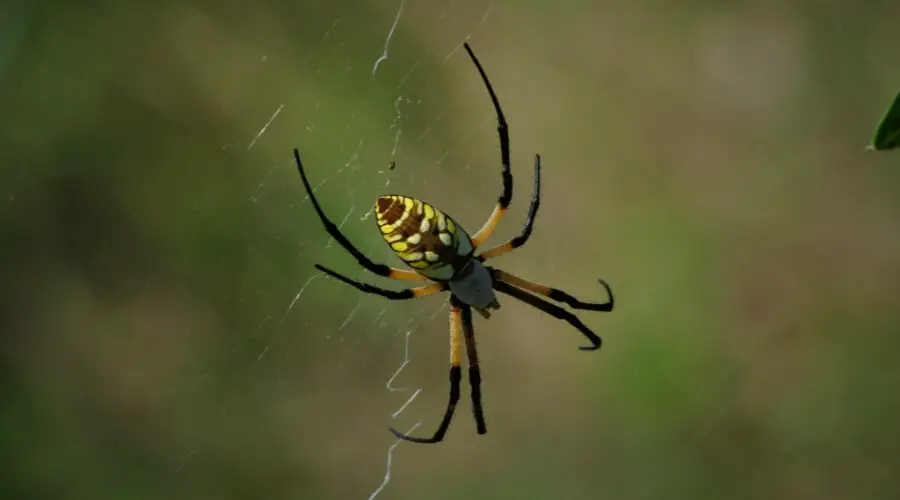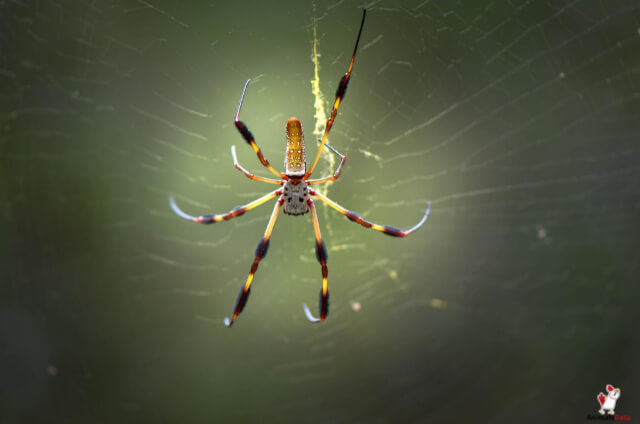Banana spiders are not really dangerous to humans. They’re just very slow and they usually only bite you when you’re trying to eat them. You can identify them by their long thin bodies and four pairs of eyes, usually white in color. Some banana spiders also have red markings on their backs, but these aren’t a surefire way to tell them apart from other types of spiders.
Is A Banana Spider Bite Poisonous? – MedicineNet
Source : ( https://www.medicinenet.com)
Yes, banana spiders do bite humans and they are poisonous. Their bites on children are particularly deadly. Their venom is toxic to the nervous system and can lead to paralysis, respiratory failure, convulsions, and death. The spider venom is neurotoxic so it affects the nervous system. It can cause paralysis, respiratory failure, and convulsions. Banana spiders are also quite aggressive and will bite if they feel threatened. If you encounter a banana spider in your home or garden then the best thing to do is leave it alone or call the local pest control center to take care of it.
How Do You Identify Banana Spiders?

Banana spiders are tarantulas. They are brownish in color with a pattern of yellow rings on their abdomen. Banana spiders, like a tarantula, live in warm tropical countries like Central America. The banana spider is much smaller than the tarantula and it has long hairs that can identify banana spiders by their color. Most species are yellow or brown in color with a white stripe down the back, but there are some other species that have red markings on their backs. You can also identify them by the shape of their body and legs. They’re quite small and usually no more than 1/2 inch long. Banana spiders are also called ‘false tarantulas’ and they belong to the family Theraphosidae.
The banana spider’s bite is pretty painful and it’s unique from other spider bites because it leaves a small red mark that turns into a blister almost immediately. The blisters will then turn into a scab that lasts for several weeks before healing completely. In some cases, the bite may cause temporary paralysis, but this is rare. You should seek medical attention as soon as possible after being bitten by a banana spider. You should bring the spider with you so it can be identified and treated.
The bite of the banana spider is not fatal, but it can be very painful and may cause a small wound that will heal slowly. If you have been bitten by a banana spider then you should see your doctor right away to receive treatment for the venom in your body.
What Are The Symptoms Of A Banana Spider Bite?

The symptoms of a banana spider bite are quite severe and may include the following:
1. Blisters around the bite area. The blisters will turn into scabs that last for several weeks before healing completely.
2. Paralysis is caused by the venom in your body. This paralysis can last for several hours to a few days.
3. Diarrhea is caused by the venom in your body. This diarrhea can last for several weeks before healing completely.
4. Stomach cramps are caused by the venom in your body. These stomach cramps can last for several weeks before healing completely.
5. Vomiting is caused by the venom in your body. This vomiting can last for several weeks before healing completely.
6. If you’re bitten by a banana spider then you should see redness and swell at the site of the bite. The area will be warm to touch for several hours after being bitten. You may also experience nausea, vomiting, abdominal pain, dizziness, and diarrhea.
7. If you have a severe reaction to the bite then you may lose consciousness or go into convulsions. This is because banana spider venom affects the nervous system.
8. If you’re bitten by a banana spider then your body will try to fight off any infection that develops. You should take painkillers such as paracetamol or ibuprofen to reduce the pain and swelling. You may also experience a fever, chills, nausea, and vomiting. The bite site will become red and swollen for several days after being bitten by a banana spider.
5 Types Of Banana Spiders (From Harmless To Venomous)
1 . Golden Silk Orb-weaver Spiders:
The silk orb-weaver spider is a cosmopolitan species of arachnid with an impressive talent for spinning webs. The silk comes from the spinnerets on the end of its abdomen, where it has more than 200,000 individual hairs that are each over one millimeter long. These hairs are produced in sets of about 1000, and they can be dyed to create different colors.
Golden silk orb-weaver spiders prefer warm areas, such as south-facing windows or inside homes that have central heating systems. A large number of tiny silk fibers makes these webs look very intricate and beautiful.
These spiders are brown in color and have a shiny, gold-colored abdomen. They’re quite small with an average leg span of about 1/2 inch long. The females will build webs on branches to catch prey such as insects and flies while the males will hunt for smaller prey such as flies and moths.
2. Cupiennius (Banana Spider):
These spiders are also called banana spiders. They’re actually not spiders, but a relative of ticks and mites. They’re the most venomous spider in the world, so you don’t want to mess around with them. They have a leg span of up to 3 inches, and they look pretty much exactly like the golden silk orb-weaver spider. They have a black belly and legs, with a bright yellow stripe on their back, and two red stripes on their face. They live in tropical rain forests.
These spiders are about 1/2 inch long and they have a bright yellow or orange abdomen. The female banana spider will spin webs to catch prey such as insects, flies, and moths while the male will hunt for smaller prey such as flies and moths.
3. Hawaiian garden spider
The Hawaiian garden spider is a small arachnid that can be found in Hawaii and throughout the world. It typically measures around two inches long and has a shiny black body with bright orange markings on its legs and abdomen. They are nocturnal hunters, eating primarily flies, thrips, moths, mosquitoes, and other small insects. The male Hawaiian garden spider will hunt for smaller prey such as flies and moths while the female lays her eggs in a webbing of silk.
4. Golden Silk-orb Weaver:
The silk-orb weaver is a kind of spider that constructs an orb web. The silk it uses to weave the web is produced from a gland on its abdomen called the spinnerets, which contains glands that secrete a liquid that hardens into sticky, fibers as soon as it touches the air. The golden silk-orb weaver is a large spider that has eight eyes, and its body can be up to 4 inches long.
5. Brazilian Wandering Spider:
The Brazilian wandering spider or Brazilian red-legged tarantula ( Psalmopoeus lalandi) is a large South American tarantula. It originates from Brazil and other parts of the Americas, which it can be found in other countries such as Argentina, Paraguay, Uruguay, and the United States. The Brazilian wandering spider has a very wide distribution but is not considered to be endangered because it is able to survive in different habitats including savannahs, tropical rainforests, woodlands, and mangroves. They are nocturnal hunters of small insects such as ants, termites, and grasshoppers.

I’m Christopher Benjamin, a dedicated Animal Nutritionist at Ethos Veterinary Health with a Bachelor of Science in Animal Science from Michigan State University. My lifelong passion for animals led me to establish AnimalsData.Com. Here, I share expert advice, educational resources, and inspiring stories to empower fellow pet lovers worldwide. Join our community as we celebrate the beauty and diversity of our beloved animal companions!

